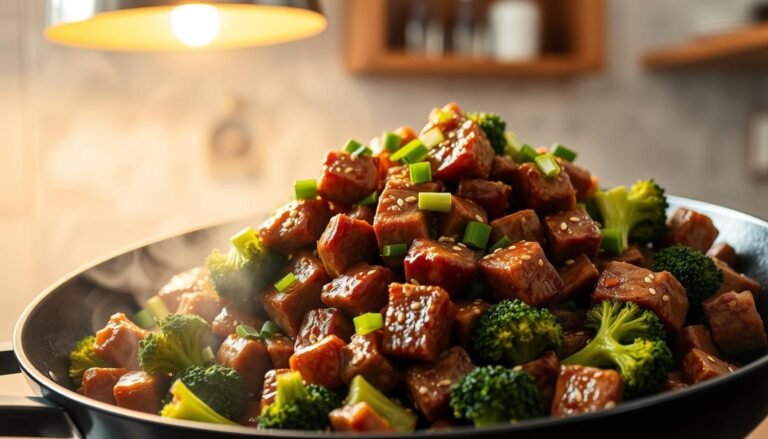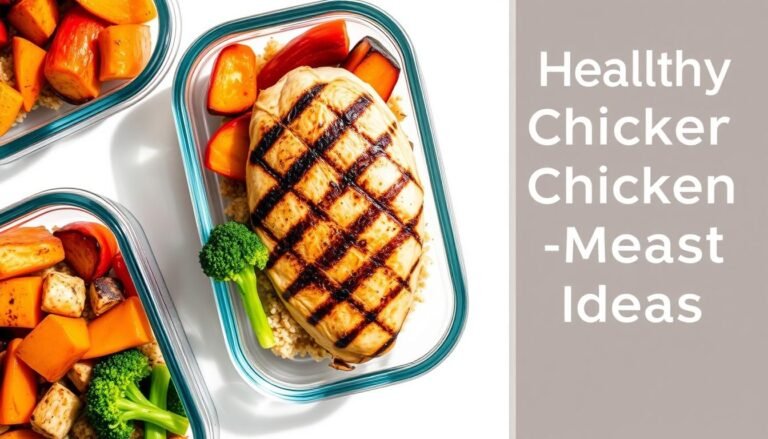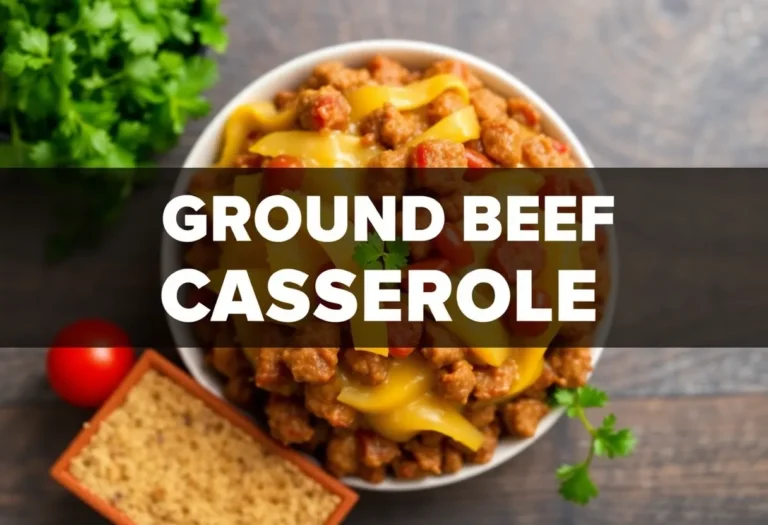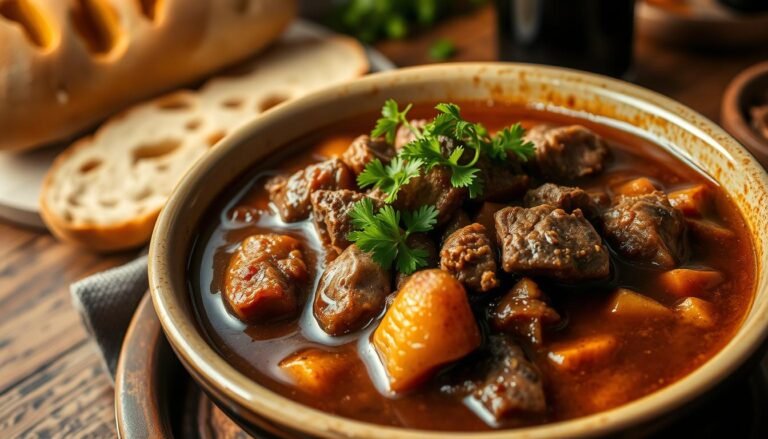Smoked Beef Brisket: The Ultimate Guide to Meat Heaven
Imagine sinking your teeth into a slice of beef brisket so tender it practically melts, with a smoky crust that crackles like autumn leaves. This isn’t just food—it’s a religious experience. Smoked beef brisket is the holy grail of BBQ, the dish that separates the pitmasters from the weekend grillers.
Why settle for dry, chewy meat when you can have perfection? Let’s fix that.
Quick Recomendation: Our blog is full of useful information to inspire you. If you are seeking a healthy and proven way to prepare your meals, we recommend this Keto product
Why This Recipe Works
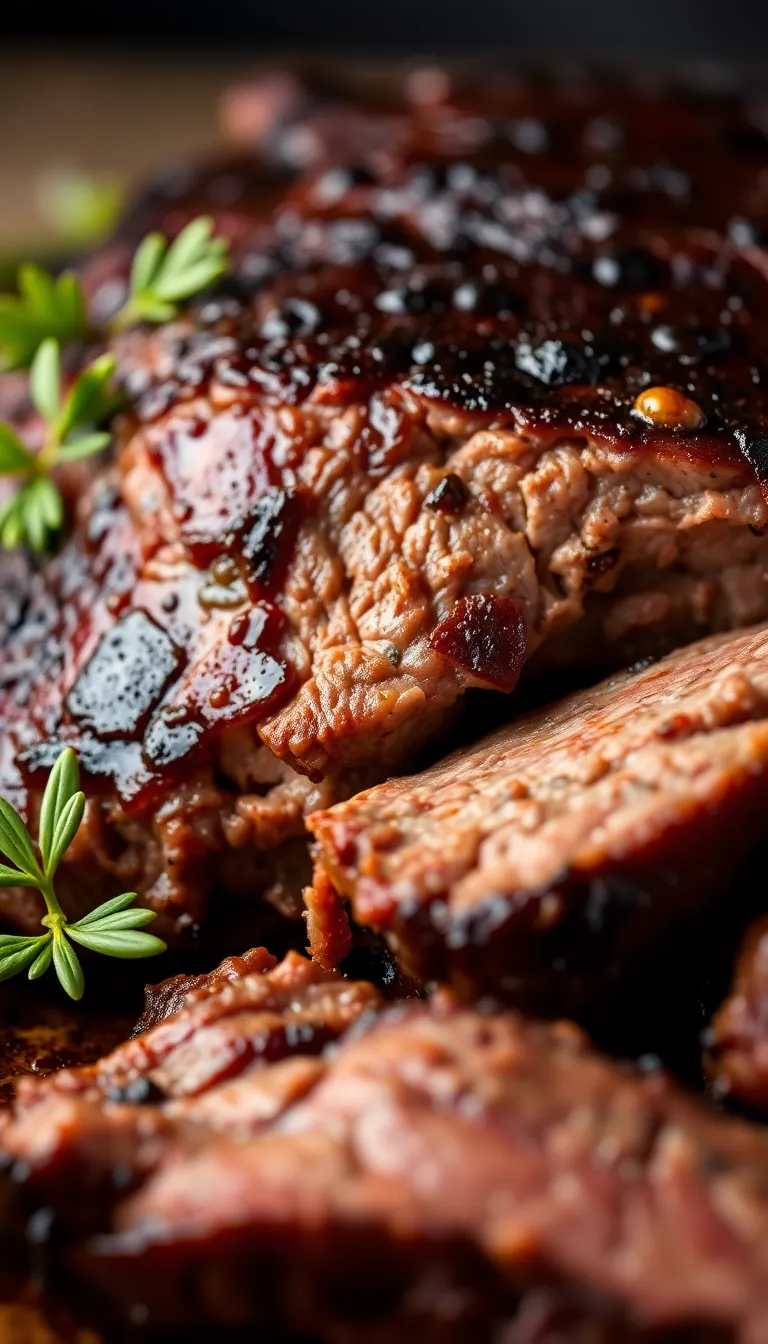
This smoked beef brisket recipe nails three things: flavor, texture, and simplicity. The low-and-slow smoking process breaks down tough collagen into gelatin, creating that legendary tenderness.
The smoke infuses every fiber of the meat, while the bark—a crispy, seasoned outer layer—adds a crunch you’ll dream about. No fancy tricks, just science and patience.
Ingredients
- 1 whole beef brisket (10–12 lbs) – Packer cut, fat cap intact
- 1/4 cup coarse kosher salt – For the perfect crust
- 1/4 cup black pepper – Freshly ground, because pre-ground is sad
- 2 tbsp garlic powder – Because garlic makes everything better
- 2 tbsp onion powder – For depth
- 1 tbsp paprika – Smoky sweetness
- Wood chunks (hickory or oak) – No pellets, please
Step-by-Step Instructions
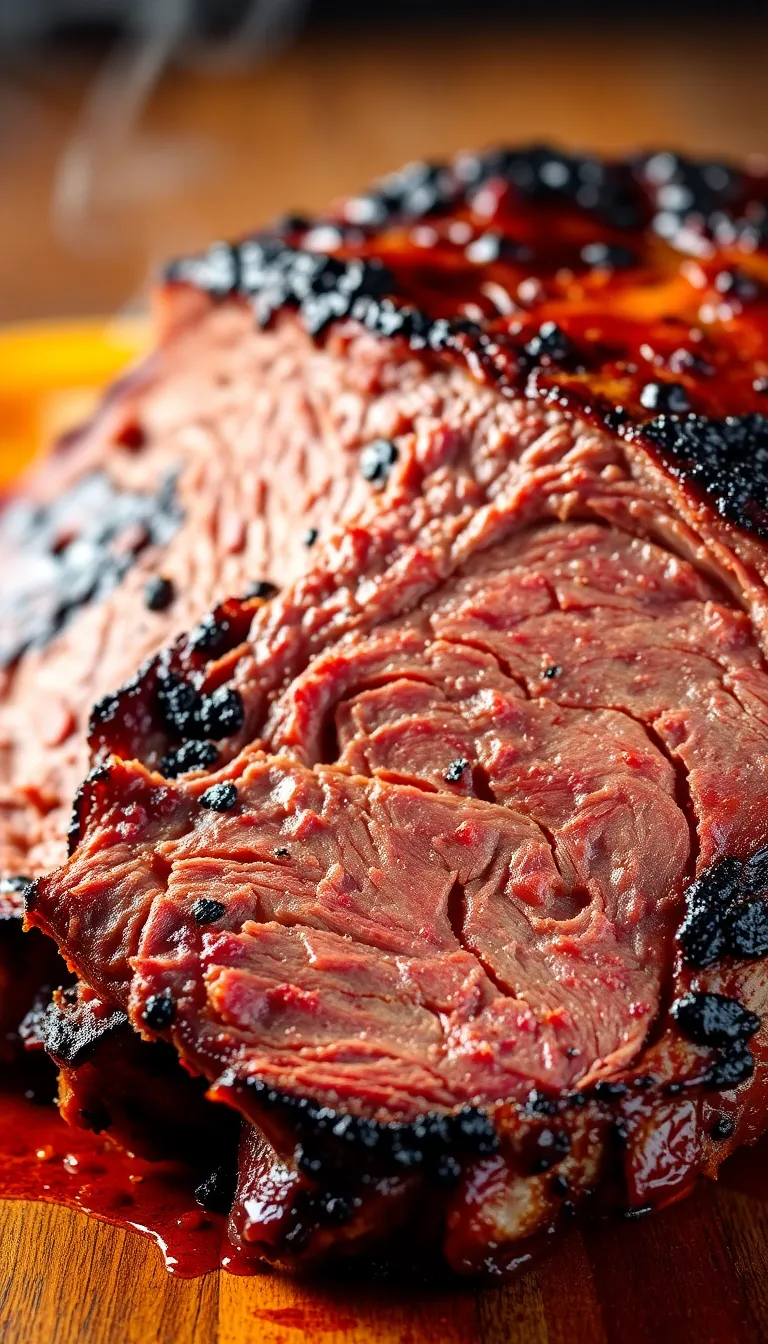
- Trim the fat. Leave 1/4 inch of fat on the brisket. Any more, and you’re just wasting bark potential.
- Season aggressively. Mix salt, pepper, garlic powder, onion powder, and paprika.
Rub it all over the brisket like you’re mad at it.
- Preheat your smoker. 225°F is the magic number. Use hickory or oak wood for smoke.
- Smoke for 8–10 hours. Place the brisket fat-side down. Spritz with water every 2 hours if it looks dry.
- Wrap in butcher paper. Once the internal temp hits 165°F, wrap it tight.
This keeps the juices in.
- Keep smoking until 203°F. Probe the meat—it should feel like butter.
- Rest for at least 1 hour. Skip this step, and you’ll regret it forever.
Storage Instructions
Store leftover brisket in an airtight container in the fridge for up to 4 days. For longer storage, freeze slices with parchment paper between them. Reheat in a 250°F oven with a splash of beef broth to keep it moist.
Microwaving is a crime.
Why You Should Make This
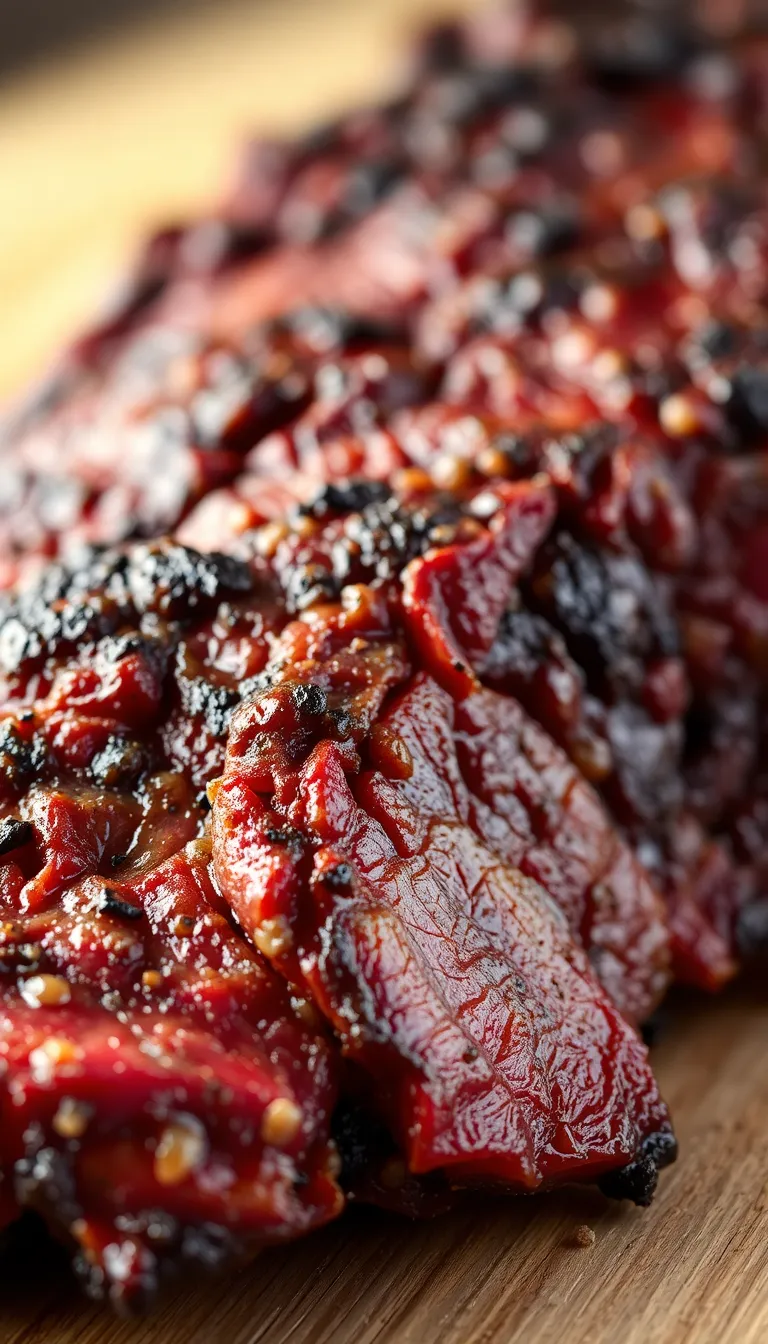
Besides the obvious (it’s delicious), smoked brisket is high in protein, rich in flavor, and crowd-pleasing. It’s also surprisingly hands-off—once it’s in the smoker, you’re free to nap or brag on social media. Plus, mastering brisket earns you eternal respect at cookouts.
Common Mistakes to Avoid
- Over-trimming the fat. Fat = flavor.
Leave some on.
- Rushing the rest. Slicing too soon turns juicy brisket into a sad, dry mess.
- Using too much smoke. You’re not cremating the meat. Light smoke is enough.
- Ignoring the temp. 203°F internal or bust. Guesswork leads to disappointment.
Alternatives
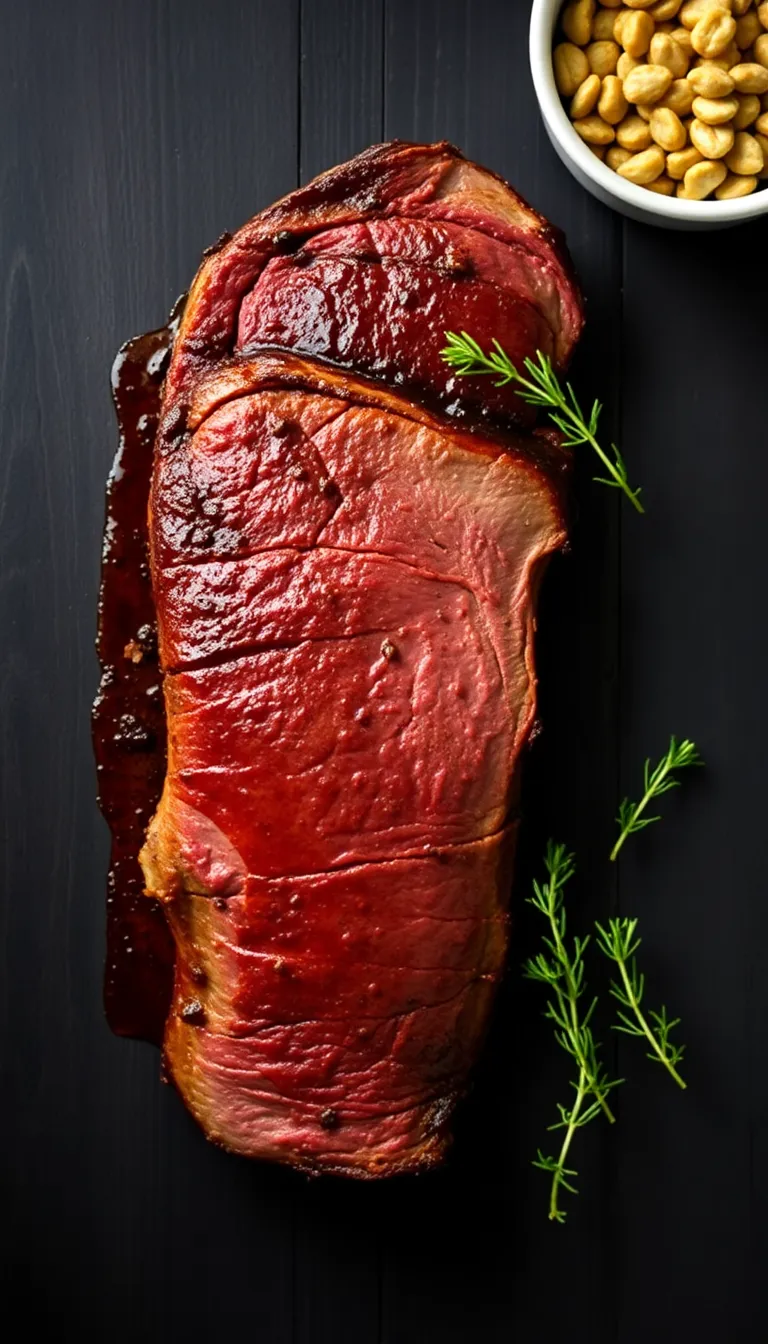
No smoker?
Try a slow cooker or oven with liquid smoke (we won’t judge). For a leaner option, use beef chuck, but don’t expect the same magic. Vegetarians… maybe sit this one out.
FAQs
Can I use a gas grill instead of a smoker?
Yes, but it’s like using a scooter instead of a Ferrari.
Set it up for indirect heat, add a smoke box with wood chips, and pray for the best.
Why butcher paper instead of foil?
Butcher paper breathes, so the bark stays crisp. Foil steams the meat, which can turn the bark soggy. Choose wisely.
How do I know when it’s done?
Probe the thickest part.
If it slides in with zero resistance, it’s ready. If not, keep smoking. Patience, grasshopper.
Can I skip the rub?
Sure, if you enjoy bland food.
The rub forms the bark and seals in flavor. Don’t skip it.
Final Thoughts
Smoked beef brisket isn’t just a meal—it’s a flex. Follow this recipe, avoid the pitfalls, and you’ll join the ranks of BBQ legends.
Or at least impress your in-laws. Either way, you win.
Quick Recomendation: Our blog is full of useful information to inspire you. If you are seeking a healthy and proven way to prepare your meals, we recommend this Keto product
Printable Recipe Card
Want just the essential recipe details without scrolling through the article? Get our printable recipe card with just the ingredients and instructions.

